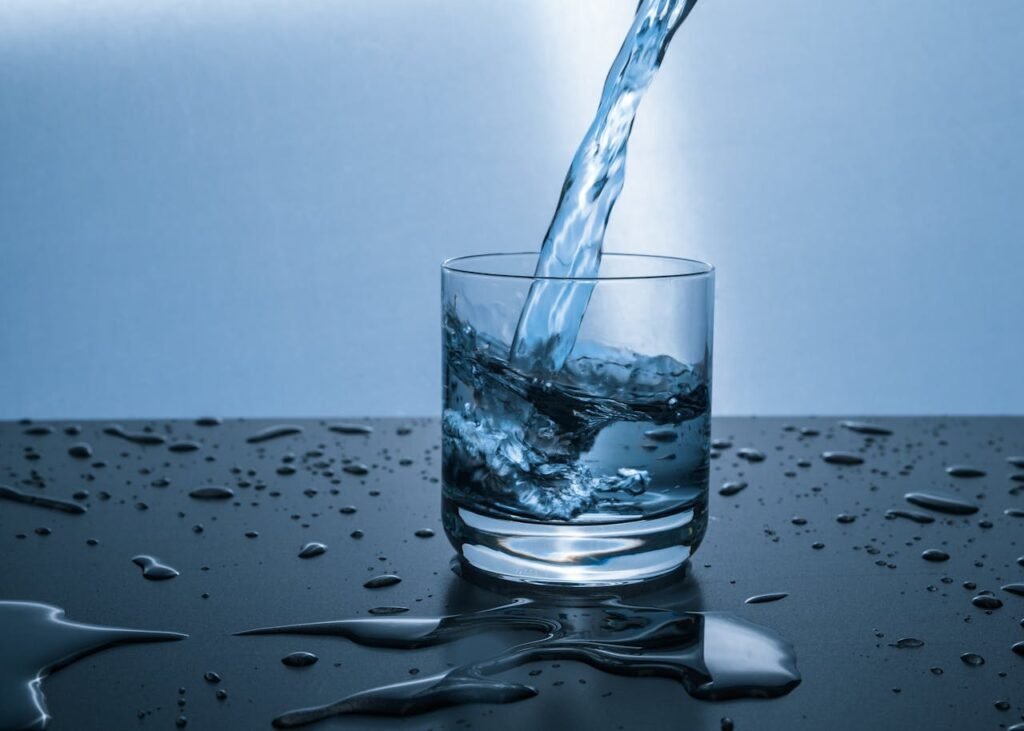
Introduction to Heatwaves
As the summer sun climbs high and the days grow longer, a silent threat looms over our bustling lives: the heatwave. Defined as a prolonged period of excessively hot weather, which may be accompanied by high humidity, heatwaves have become a recurring headline across the United States, signaling not just a shift in weather patterns but a significant concern for public health.
In this article, we’ll delve into the sweltering world of heatwaves, unraveling their causes, consequences, and most importantly, the measures we can take to protect ourselves and our loved ones. From recognizing the signs of heat-related illnesses to innovative cooling techniques that go beyond the reach of air conditioning, we’ll cover all you need to know to stay safe in the face of rising temperatures.
Join me, a seasoned medical professional, as we navigate the scorching challenges posed by heatwaves. Whether you’re a concerned parent, a caregiver for the elderly, or simply someone looking to stay informed and prepared, this guide is your first step towards beating the heat with knowledge and readiness.
Understanding Heat-Related Illnesses

As temperatures soar, our bodies struggle to maintain the delicate balance of internal temperature, a process known as thermoregulation. When this balance is disrupted, a spectrum of heat-related illnesses can occur, ranging from mild discomfort to life-threatening conditions.
Heat Exhaustion: This is often the precursor to more severe heat-related illnesses. Symptoms include heavy sweating, weakness, cold, pale and clammy skin, a fast or weak pulse, nausea or vomiting, and fainting. It’s crucial to recognize these signs early and take immediate action by moving to a cooler environment and hydrating with water or sports drinks.
Heat Stroke: This is the most severe form of heat illness and is a medical emergency. When the body’s temperature rises above 104°F (40°C), the cooling system, which is usually regulated by sweating, stops working. This can cause brain damage or death if not promptly treated. Symptoms are similar to heat exhaustion but may also include throbbing headache, confusion, no sweating, red, hot, and dry skin, and loss of consciousness. Immediate medical attention is vital.
Other Conditions: Less severe conditions include heat cramps, characterized by muscle pains or spasms that happen during heavy exercise in hot environments, and heat rash, which appears as red clusters of small blisters that look like pimples on the skin.
Understanding these illnesses is the first step in prevention. By staying informed about the symptoms and treatments, you can ensure that you and those around you remain safe during a heatwave.
Preventive Measures

The adage “prevention is better than cure” holds particularly true when it comes to heatwaves. Here are some proactive steps you can take to shield yourself and your community from the risks:
Stay Hydrated: Drink plenty of fluids, especially water, even if you do not feel thirsty. Your body needs hydration to keep cool, and it’s recommended to drink more than usual on hot days.
Dress Appropriately: Wear lightweight, light-colored, loose-fitting clothing. Dark colors absorb more heat, and tight clothes don’t let sweat evaporate as easily.
Limit Outdoor Activities: Try to schedule outdoor activities during cooler parts of the day, like early morning or evening. If you must be outside during peak heat, take frequent breaks in shaded areas or indoors.
Use Sun Protection: Apply a broad-spectrum sunscreen with an SPF of at least 30, and wear a wide-brimmed hat and sunglasses when outdoors.
Stay Informed: Keep up with local weather forecasts and heat advisories. Knowing when a heatwave is expected allows you to plan and prepare in advance.
By incorporating these preventive measures into your daily routine, you can significantly reduce the risk of falling victim to the heat and ensure that you enjoy your summer safely.
Safety Tips for Vulnerable Populations
Heatwaves can be particularly hazardous for certain groups of people who are more vulnerable to the effects of extreme heat. These include young children, the elderly, individuals with chronic health conditions, and pets. Here are some tailored tips to ensure their safety:
For Children and the Elderly:
- Ensure they stay hydrated by offering fluids regularly.
- Dress them in appropriate clothing as described in the preventive measures.
- Never leave them in a parked car, even with the windows down.
- Check on them frequently, especially if they live alone or have health issues.
Learn about science of aging and longevity.
For Those with Chronic Health Conditions:
- Encourage them to speak with their healthcare provider about any necessary precautions or changes in medication during a heatwave.
- Help them to identify the coolest room in their home where they can stay during peak heat hours.
- Long COVID affected a lot of individuals & are at more risk of heat exhaustion.
For Pets:
- Provide ample shade and water if they’re outdoors.
- Avoid walking dogs on hot pavement which can burn their paws.
- Consider pet-safe sunscreens for pets with short or light-colored fur.
By being mindful of these safety tips, we can help protect our most vulnerable populations from the dangers of heatwaves.
Cooling Techniques Without Air Conditioning
When the mercury rises, air conditioning can seem like a necessity. However, not everyone has access to it, and it can be costly to run. Here are some innovative ways to beat the heat without AC:
Use Fans Strategically:
- Place box fans in windows to pull cool air in during the night and expel hot air during the day.
- Create a cross breeze by positioning fans across from each other.
Cool Your Pulse Points:
- Apply cold compresses or ice packs to pulse points like your wrists, neck, elbows, groin, ankles, and behind the knees.
Optimize Your Home:
- Keep blinds or curtains closed during the day to block out the sun.
- Open windows at night to let in cooler air.
DIY Cooling:
- Hang a damp sheet in front of an open window to cool the incoming air.
- Fill a spray bottle with water and use it to mist yourself throughout the day.
Stay Low:
- Heat rises, so set up sleeping arrangements in the lowest part of your home if possible.
By employing these cooling techniques, you can maintain a comfortable temperature in your home and body without the need for air conditioning.
Emergency Response

Despite our best efforts to prevent them, heat-related emergencies can still occur. Being prepared to respond quickly and effectively is crucial. Here’s what you need to know:
First Aid for Heat Exhaustion:
- Move the person to a cooler environment, preferably indoors or in the shade.
- Lay them down and elevate their legs slightly.
- Have them drink cool water or a sports beverage.
- Apply cool, wet cloths to as much of the body as possible.
First Aid for Heat Stroke:
- Call emergency services immediately; heat stroke is a medical emergency.
- While waiting for help, move the person to a cooler place and try to reduce their body temperature with cool cloths or a bath.
- Do not give fluids if the person is unconscious, has a seizure, or is vomiting.
Be Prepared:
- Keep a list of emergency contacts readily available.
- Know the location of the nearest hospital or clinic.
- Have a first aid kit with necessary supplies like water, sports drinks, and cooling packs.
By understanding these emergency response techniques, you can help save lives during critical moments in a heatwave.
Community Initiatives
In times of extreme heat, community solidarity can make a significant difference. Here are some initiatives that can help everyone stay safe:
Cooling Centers:
- Local authorities often set up public cooling centers in places like schools, community centers, and libraries where people can escape the heat.
Check on Neighbors:
- Establish a buddy system to check on elderly or vulnerable neighbors, especially those without air conditioning.
Hydration Stations:
- Set up stations with free water in public places to ensure everyone has access to hydration.
Educational Programs:
- Organize workshops or distribute information on heat safety and first aid for heat-related illnesses.
Volunteer Groups:
- Create groups to assist with installing window reflectors or weather-stripping for those who may need help preparing their homes for the heat.
By taking these community-driven actions, we can foster a supportive environment that prioritizes the well-being of all residents during a heatwave.
Conclusion
As we wrap up our exploration of heatwaves, it’s clear that these scorching phenomena are more than just a topic of conversation—they’re a call to action. We’ve uncovered the science behind heat-related illnesses, shared preventive measures to safeguard our health, and highlighted community initiatives that exemplify the strength of collective effort.
Whether you’re adapting your daily routine to beat the heat or reaching out to help those in need, every step you take is a stride towards resilience. As a medical professional, I urge you not to underestimate the power of preparedness. By staying informed, equipped, and connected, we can weather the heatwave storm with confidence and care.
Let this article be a reminder that when temperatures rise, so does our capacity for compassion and innovation. Together, we can turn the tide against the heat and ensure that our summers remain a time of joy and vitality.
Right nutrition can help you beat the heatwave: Read full story here.
Stay cool, stay hydrated, and most importantly, stay safe.
Take Action Today
As you finish reading this article, don’t let the insights and tips end here. Take a moment to reflect on how you can apply this knowledge to your life and community. Here’s how you can take action:
- Educate Yourself and Others: Share this article with friends, family, and neighbors. The more people know about heat safety, the stronger our community will be.
- Prepare Your Home: Use the tips provided to make your living space cooler and more comfortable during the heat.
- Check on Vulnerable Individuals: Reach out to those who may need extra help during a heatwave.
- Get Involved: Participate in or organize local initiatives to support those affected by extreme heat.
Your actions, no matter how small, can have a profound impact. Let’s pledge to stay vigilant and proactive in the face of rising temperatures.
Are you ready to beat the heat? Join us in making this summer safe for everyone.
Frequently Asked Questions
Q: How do I know if it’s too hot to exercise outside? A: Check the heat index, which factors in humidity with temperature. If it’s above 90°F, consider indoor activities or exercise during cooler parts of the day.
Q: Can fans be used instead of air conditioning during a heatwave? A: Fans can help circulate air and make you feel cooler, but they won’t prevent heat-related illnesses when temperatures are very high. Use them along with other cooling methods.
Q: What should I do if someone shows signs of heat stroke? A: Call emergency services immediately. Move the person to a cooler place and use cool cloths or a bath to lower their body temperature.
Q: How much water should I drink during a heatwave? A: Increase your normal water intake. Aim for at least 8-10 glasses a day and more if you’re active or sweating heavily.
Q: Are children more susceptible to heat-related illnesses? A: Yes, children’s bodies don’t regulate temperature as well as adults. Ensure they stay hydrated, rest frequently, and stay in the shade or indoors during peak heat.


Your point of view caught my eye and was very interesting. Thanks. I have a question for you.